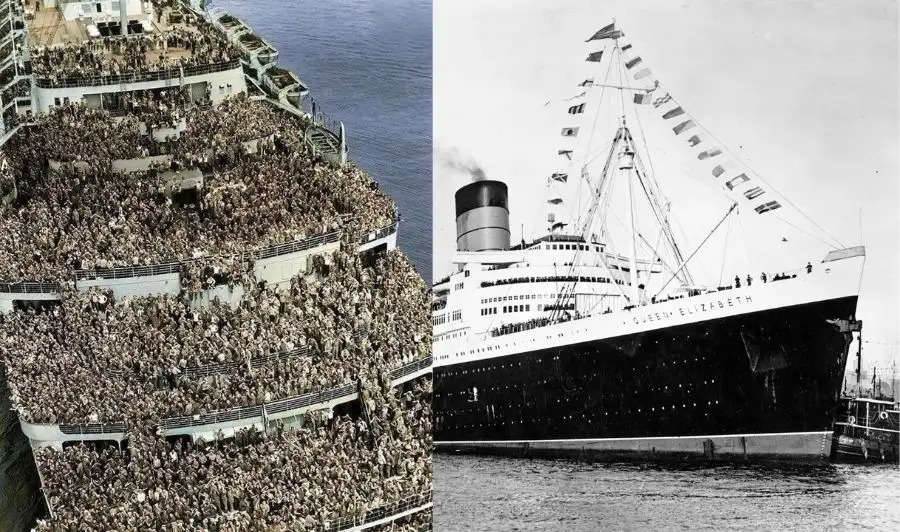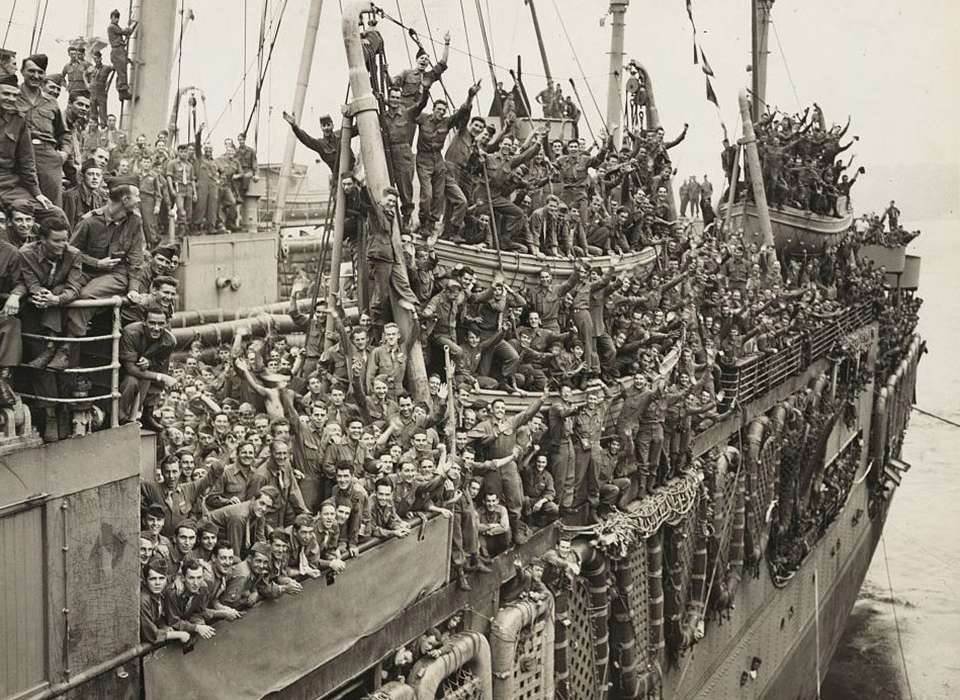
The Mighty Journey Home
When the RMS Queen Elizabeth sailed into New York Harbor in 1945, it marked the end of an era and the return of thousands of war-weary soldiers.
But what made this journey so monumental? The ship could carry an impressive **15,000 people**, including 900 crew members, transforming it into a floating city. The voyage from the British Isles to the United States' east coast typically took 5 to 7 days, a small span considering the monumental service she provided during the war.
A Warship in Disguise
During World War II, the RMS Queen Elizabeth wasn't just a passenger ship. She played a crucial role in the war effort, transporting **over 750,000 troops** and covering a staggering 500,000 miles (800,000 km).
This ship was a lifeline, a fortress, and a symbol of hope. How did such a massive vessel avoid the dangers of war? Through cunning and resilience, she managed to steer clear of enemy submarines and mines, ensuring safe passage for thousands of soldiers.

The Heartbeat of the Journey
Imagine being a soldier on that ship, surrounded by thousands of comrades, each with their own stories of bravery and loss.
The camaraderie, the relief of heading home, and the anticipation of reuniting with loved ones must have created an atmosphere charged with emotion. What did they talk about? What dreams and fears did they share during those 5 to 7 days at sea?
One veteran recalled, "We knew we were heading home, but the reality hadn't set in until we saw the Statue of Liberty. It was like waking up from a nightmare."
From Luxury Liner to War Hero
Originally designed as a luxury liner, the RMS Queen Elizabeth's transformation into a troopship was a testament to human ingenuity and adaptability.
Stripped of her lavish interiors, she became a fortress of steel, equipped to handle the rigors of war. Her ability to carry such a large number of troops in relative comfort made her an invaluable asset.

The Emotional Homecoming
The sight of the RMS Queen Elizabeth pulling into New York Harbor, packed with soldiers returning home, was an emotional spectacle. Families waited anxiously, scanning the decks for familiar faces.
The ship's arrival signified not just the end of a journey, but the end of a global conflict that had touched every corner of their lives.
What can we learn from the RMS Queen Elizabeth's remarkable service? Her story is one of resilience, adaptability, and hope. She not only ferried troops but also carried the weight of their hopes and dreams. Her decks were witness to countless stories of bravery, camaraderie, and relief.
Reflecting on this historic voyage, what parallels can we draw to our lives today? How do we adapt and overcome in times of crisis? Share your thoughts and stories in the comments below.
How would you feel seeing the Statue of Liberty after years at war?



















